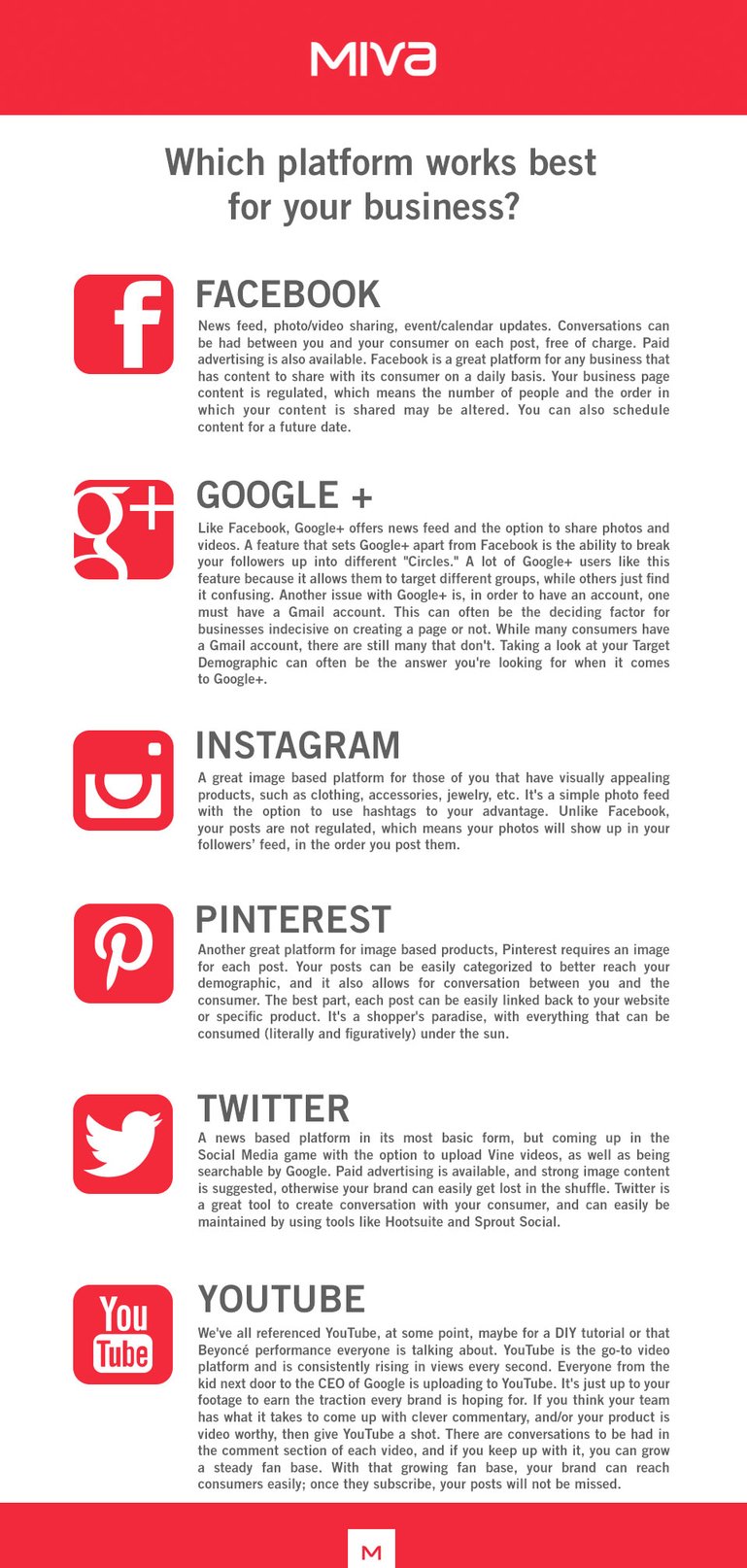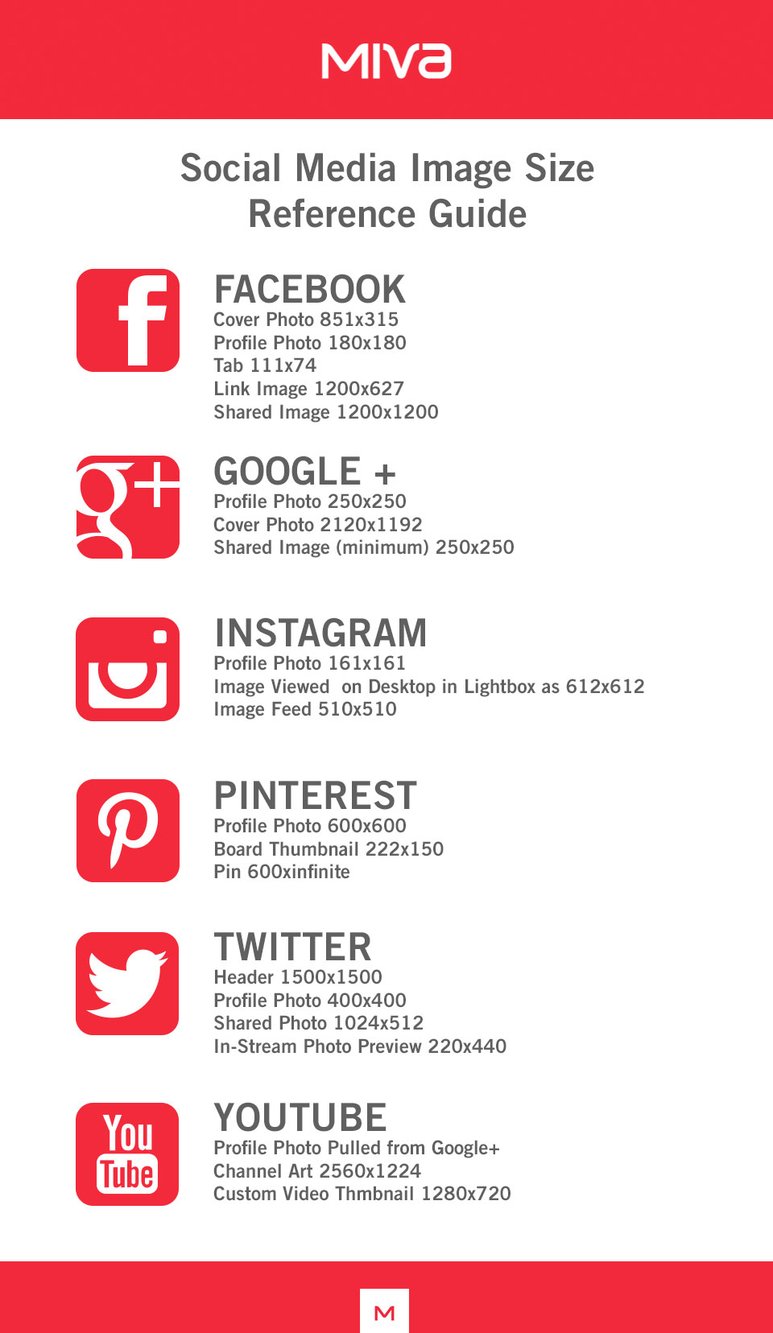
See why top ecommerce brands use Miva’s no-code platform to run
multiple stores, manage massive catalogs, and grow their revenue.
When marketing your online business, social media is sure to be an important tool to reach potential customers. Depending on your specific target demographic, there could be different approaches that work better than others. One of the biggest differences in social media usage is actually between men and women. This great infographic from Finances Online shows just how differently men and women interact with social media on their smartphones.

When you’re a busy business owner wearing many hats, the key to effective Social Media is choosing one or two platforms that work best for you and focusing on just that.
You don’t have to be an all-star on all platforms but rather an all-star on the platforms you choose. There are very few businesses that can truly benefit from all that the social world has to offer. And, unless you are one of those few, it’s better that you just stick to what you know and don’t try too hard to make something work just because it’s available. As referenced in our blog post back in October – Your Guide to Online Marketing on a Shoestring Budget, we recommend “pick two and focus.”
Grab a pad of paper and write down the two platforms that you feel your business is benefiting from. Take the guess out of it by viewing your Google Analytics to see which platforms are already working for you. If you have Google Analytics, you should reference it as often as possible, that’s what it’s there for. If you are starting fresh and you are unsure of which platforms to choose, here’s a quick breakdown:

Okay – we’d better stop. We know there are more platforms out there, but remember, we’re trying to take the “overwhelm” out of Social Media, so we’ve stuck to the basics.
Now, back to that checklist. Once you have those two platforms written down, circle them, take a deep breath and tell yourself, “All those other platforms don’t exist.” At least for now. You can always revisit the others at a later date. Today, your goal is to “pick two and focus.”
So, now that you’ve picked two to spruce up, let’s move on to strategy. One of the biggest holdups, when it comes to small businesses and social media, is getting started. Sure, you can figure out how to post a photo here and there, but is there a solid strategy behind it? While not every move must be thought out, it is important to have an end goal. We like to break down our social strategy into three different groups:
What are your social images saying about you? Some of the biggest mishaps on Facebook and Twitter are the misuse of social imagery. It seems simple: snap a pic, upload and viola! But, now business owners have to look out for the dreaded specs. Every platform has them, and of course, they are all different. A Twitter image should be sized precisely at 1024 x 512 pixels, but only for shared images. Your header, profile photo and in-stream photo previews all have different measurements.
To help you get a better grasp on photo share, we’ve created this easy Social Media Image Size Reference Guide

Another easy tool that comes highly recommended by Social Media Expert Peg Fitzpatrick is Canva. On Canva.com you can create custom Facebook header images that look great when you share them on your page, without any pixilation or image distortion.
Last but certainly not least, we must remind you of something you know all too well – measuring your investment. Most social platforms have pretty clear insights for you to review. Get in there and take a look at the reach on each post vs. the time/money spent. With just a few minutes a day, you will be able to see what works for your business and what doesn’t. Don’t rely on your social platforms’ analytics alone. You can easily track click-throughs to your website with Google Analytics.
Yes, this was short and sweet, just as we intended. The point here is to help you focus on some key points that can help you up your Social Media game, without overwhelming. We hope we have done just that, and wish you luck in conquering those two platforms you chose to focus on.
Back to topNo worries, download the PDF version now and enjoy your reading later...
Download PDF Miva
Miva
Miva offers a flexible and adaptable ecommerce platform that evolves with businesses and allows them to drive sales, maximize average order value, cut overhead costs, and increase revenue. Miva has been helping businesses realize their ecommerce potential for over 20 years and empowering retail, wholesale, and direct-to-consumer sellers across all industries to transform their business through ecommerce.
Visit Website